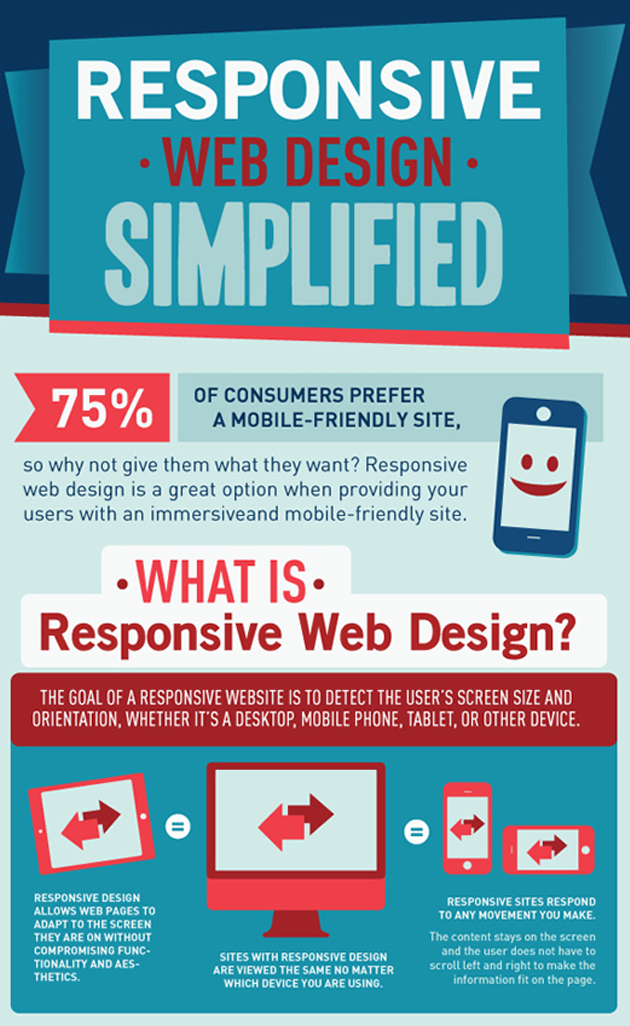Fundamental Facets Of Web Design: Standards For Developing A User-Centric Site
Fundamental Facets Of Web Design: Standards For Developing A User-Centric Site
Blog Article
Write-Up By-Wiley Daugaard
When it involves site layout, guaranteeing user-friendliness is essential. From receptive layout to structured navigation, every aspect plays a vital duty in producing a website that deals with your audience's requirements. But what concerning the finer details that can make or damage a customer's browsing experience? Keep tuned as we discover some often-overlooked tips that can raise your web site's use to the next degree, making it genuinely stand out in the electronic landscape.
Relevance of Responsive Design
Receptive style is an important aspect of contemporary site growth. Ensuring your site is receptive means that it can adapt to various screen sizes and gadgets, providing a smooth experience for individuals.
With the boosting use of smart devices and tablets to access the web, having a receptive style is important for getting to a broader target market. It aids in enhancing user experience by making your site very easy to browse and continue reading any gadget.
Additionally, responsive design can favorably impact your internet search engine rankings, as search engines like Google focus on mobile-friendly web sites. By having a responsive style, you're also future-proofing your web site, as new gadgets with differing screen sizes remain to arise.
Simplify Navigating Structure
To improve individual experience and assist in simple accessibility to info on your web site, streamlining the navigating framework is critical. When developing your website, focus on producing a clear and instinctive navigating menu that assists visitors locate what they're seeking swiftly.
Limit the number of menu products to the essentials, organizing related web pages with each other to stay clear of overwhelming individuals. Use descriptive tags that plainly show the material of each page, making it much easier for individuals to understand where each web link will take them.
Think about implementing dropdown menus for subcategories to avoid cluttering the main navigation bar. Furthermore, consist of Discover More Here on the page for individuals that like searching for certain info.
Focus on mobile responsiveness in your navigation style to guarantee simple gain access to on all gadgets.
Enhance Web Page Lots Speed
Improving web page tons rate is critical for maintaining visitors on your web site. Slow-loading web pages irritate users and can bring about high bounce rates. To maximize page lots speed, beginning by maximizing images. Press images without jeopardizing top quality to minimize their documents sizes.
Additionally, allow https://mobile-payments-and-digit45544.blog-mall.com/33623231/website-growth-difficulties-to-stay-clear-of-recommendations-for-an-effortless-introduce caching to keep regularly accessed resources locally, accelerating tons times for returning visitors. Minify CSS, JavaScript, and HTML documents by removing unneeded characters, remarks, and format, boosting load rate.
Take into consideration using a material shipment network (CDN) to disperse your internet site's content across numerous servers worldwide, decreasing latency for individuals accessing your site from different locations. Lastly, restrict the use of third-party scripts and plugins, as they can considerably impact load times.
Conclusion
In conclusion, by incorporating receptive layout, simplifying navigating, and optimizing page lots rate, you can develop an easy to use site that appeals to a broader target market and boosts customer experience. These essential elements ensure that visitors can easily gain access to and navigate your site across different tools, bring about enhanced engagement and satisfaction. By concentrating on these crucial aspects, you can build a successful site that keeps users coming back for even more.
